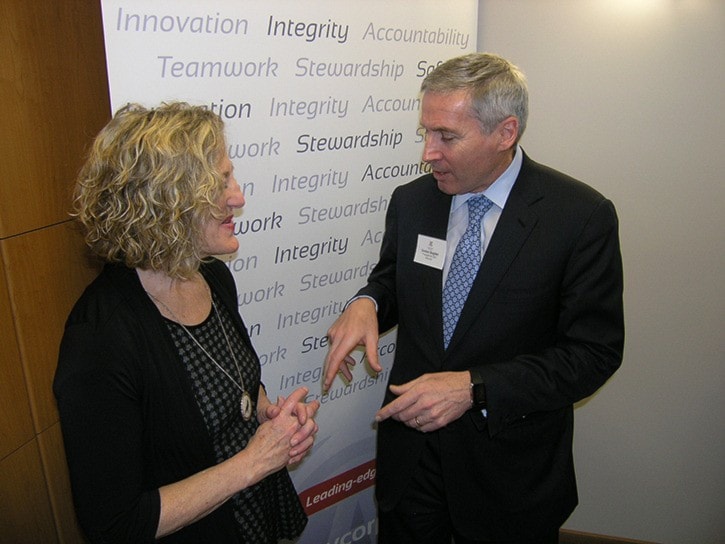THE company which wants to build a molybdenum mine at Kitsault on the north coast remains committed to the project, says its president.
And although it won’t meet an initial target of raising its final financing and a construction start this year, it is now focused on 2016, Alloycorp’s Gordon Bogden said of its Avanti Kitsault project.
“What we’ve done is taken a pause,” explained Bogden.
The key factor was a switch this spring in engineering companies from AMEC, which has been working on the project for years, to DRA from South Africa, to prepare the project’s front end engineering design, he said.
“There was nothing wrong with AMEC. They were great,” said Bogden in adding the DRA design study will deepen Alloycorp’s knowledge of construction and other costs.
The work done to date had been pushing projected costs several hundred million dollars above Alloycorp’s original estimation of $1 billion, he said.
“The [ore processing] mill is a major factor. On this project it could be anywhere from one-quarter to one-third of overall costs and we want to get that number right,” Bogden continued.
Getting the number right is also key to providing a five-member European banking syndicate with the comfort level needed to fully commit financing.
To date, two of the syndicate’s members have committed themselves and the others remain interested, said Bogden.
“The original syndicate is still together. The [financing] mandate letter is still there,” he said.
Bogden said syndicate members want to make a site visit to Kitsault but because of the engineering company switch, the design engineering study, and costing, won’t be known until this fall.
And once October comes around, winter weather can settle in at Kitsault, making any such visit tenuous, he said.
“No banks, the credit committees, will want to make any decisions so late in the year so we said “let’s do this right” and put this off to the new year,” he continued.
“So in effect, what we’ve done is push this forward six to eight months, that’s all.”
Bogden did acknowledge prices for molybdenum, used as a strengthening agent in the production of steel, are low (a company statement referred to prices as “languishing”), but said the new target mine commencement date of 2018 is at a time when they are expected to have recovered.
And while the company statement referred to the current investment climate is “tepid,” he said that doesn’t apply to the kind of private financing Alloycorp expects to lock up.
But the company is cutting expenditures and its workforce while maintaining a minimum level of activity at the project site.
Workforce recruitment has also been halted pending a ramp up next year.
“We’ve done all the pre-construction work we can there,” said Bogden of millions spent on improving road access from the Nass Valley to Kitsault, rebuilding a provincial government bridge and putting in place an accommodation camp.
The company opened a Terrace office this spring and it will remain open, said Bogden.
Kitsault has been the location of two previous molybdenum mine projects in the past decades with one resulting in the construction of a town and a brief operating life in the early 1980s before markets turned downward.
Alloycorp, which was at first called Avanti Mining and has now placed the project under a subsidiary called Avanti Kitsault Mining Ltd., purchased the property in 2008 and began exploration and cost assessment.
It received provincial environmental approval from the provincial government in 2013, environmental approval from the federal government in 2014 and it negotiated an economics benefits agreement with the Nisga’a Lisims Government in 2014.
The company had committed itself to training and employing Nisga’a residents of the Nass Valley which is connected by a road to the Kitsault location.
It’s also maintained an active presence in the Nass Valley.
To date it’s spent an estimated $100 million on all facets of the project.
